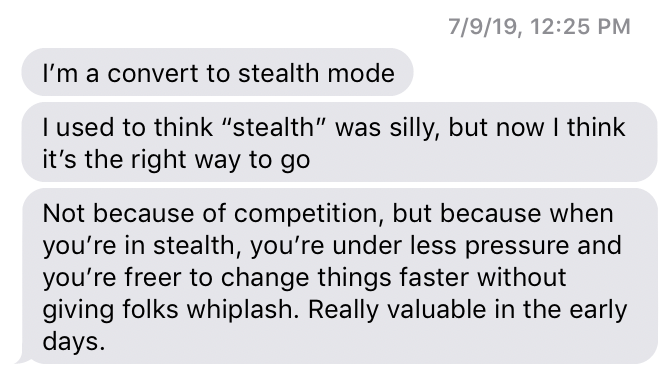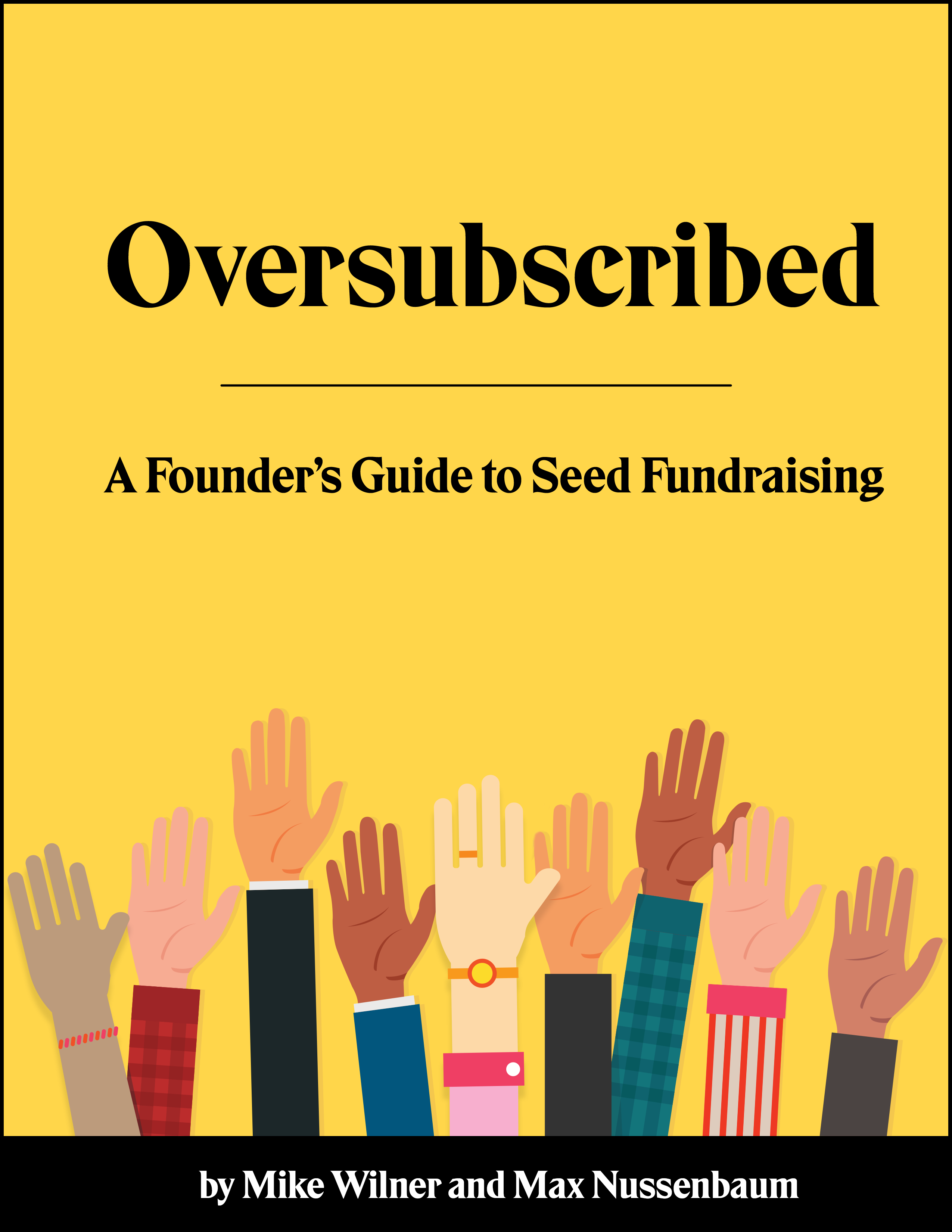The pros and cons of stealth mode (Oversubscribed Weekly #29)
July 11, 2019Max here. Earlier this week, I was quite surprised to receive this text from Mike:

No, I wasn’t surprised because it’s weird to receive an out-of-the-blue startup soliloquy with no previous context—that kind of thing is par for the course in Mike’s and my relationship. Rather, I was surprised because stealth mode is traditionally something that intelligent people in the startup ecosystem look down on.
Here’s a good Fast Company article summarizing the prevailing wisdom. I also like this piece, which made it to the top of Hacker News a while back. TL;DR: Founders are often attracted to stealth mode because they’re worried about people stealing their idea, but ideas are worthless; execution is what matters.
But, as indicated above, Mike had a different reason for leaning into stealth mode: freedom to change what you’re working on without confusing people. Rather than summarizing the rest of what he said, I thought I’d share our entire conversation, Socrates-style:
Max: Interesting! I’m not sure I’m sold. What convinced you?
Mike: I’ve just seen a lot more companies that are in stealth recently. Including a lot of YC/Techstars companies. No website, working on things quietly, etc. Building in public makes you less agile early on.
Max: Maybe stealth makes more sense for repeat founders. For first-time founders, I feel like the public commitment pressures you to keep going at first when things are shaky. Then again, that could be a downside if it turns out your idea/market is terrible.
Mike: Yeah, I’d say I see stealth mode from second-timers more frequently.
Max: That makes sense. I’d definitely be more inclined to do it the second time around. Also, for your second company you presumably don’t have to do things like email every single person you know in an attempt to find leads for your angel round, which makes stealth more viable.
Mike: It’s like the Amazon concept of two-way doors: decisions that you can reverse, so you should make them quickly. When building in public, you have fewer two-way doors. Or it feels more challenging to reverse decisions—which can be super important early on.
Max: I agree. But if you pursue the “sell before building” path, how stealth can you really be?
Mike: There’s more nuance here than “stealth is good/bad.” There’s a certain point where you need to be relatively public. Though I’ve seen quite a few companies who have gotten big pilot customers without a website. I think the overall point is not to get too ahead of your skis when publicly committing to a direction.
Max: True, that’s definitely doable. By the way, I’m going to use this conversation in our next newsletter.
Mike: Make sure to edit it so that I say something embarrassing I would never actually say in real life.
Max: Will do.
Mike: My favorite movie is Mamma Mia 2: Here We Go Again. It’s Pierce Brosnan’s best work!
—
Since writing this newsletter allows me to have the last word in this conversation, I’d add one more thought: like human sexuality, stealth is more of a spectrum than a binary. It’s never a good idea to be so stealth that you don’t tell anyone what you’re building—like the classic stereotype of the founder so afraid of someone stealing her idea that she goes to a networking event and won’t tell anyone there what she’s working on. But there can be an effective middle ground between that and actually launching your product with a website, press release, etc.
What do y’all think? Where on the stealth continuum are you building, and why did you choose that approach?
Enjoy this? Get Oversubscribed in your inbox every Thursday.

